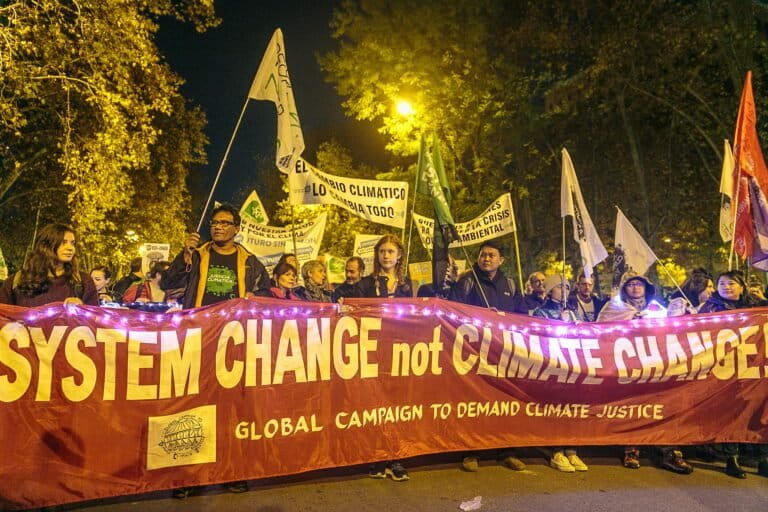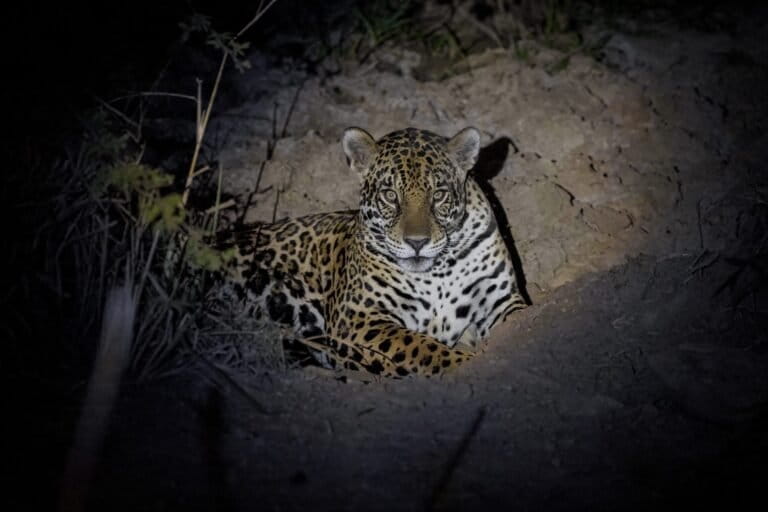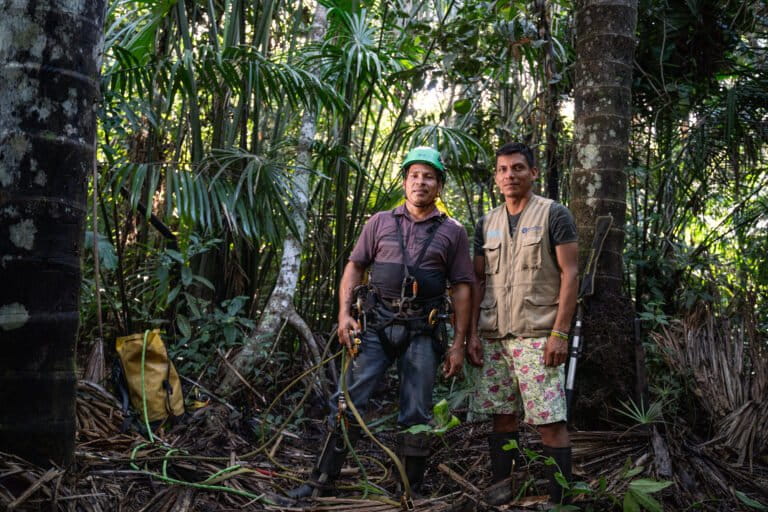- A researcher-illustrator team has traced the emotional and personal links of two of India’s indigenous tribes to what is now a protected area via their memories.
- By interviewing more than 200 community members, most of them from the Bugun and Shertukpen tribes living near Eaglenest Wildlife Sanctuary in Arunachal Pradesh state, the duo have created an 86-page book and a web repository called “The Eaglenest Memory Project” containing illustrations and notes based on the tribes’ recollections.
- The team pieced together the tribes’ memories into five main themes, including how they remember Eaglenest during and after the 1962 India-China war, the annual migration of the Shertukpen tribes through Eaglenest to Assam state, and how the Dalai Lama’s visit changed hunting practices among the Buguns.
From a new bird to a new community reserve: India’s tribe sets example
Bird business: The man who taught his tribe to profit from conservation
In India, indigenous youths are filming their own forests and communities
SINGCHUNG, India — Six decades ago, the land that today is Eaglenest Wildlife Sanctuary in India’s Arunachal Pradesh state was a battleground. The Bugun and Shertukpen tribes living around the sanctuary vividly remember the monthlong 1962 India-China war that was triggered by disputes over the Himalayan border and India granting asylum to Tibetan refugees.
Dorjee Khrimey, for example, was 12 and living in a relief camp in the neighboring state of Assam with his family. On Nov. 20, when the Indian Army was down to one battalion, the Chinese launched an attack on Chaku, a major checkpoint for the army, right in the heart of Eaglenest. Hundreds of Indian soldiers were killed or wounded, or went missing. Those who survived, fled.
After a cease-fire was declared on Nov. 21, Dorjee made his way through Eaglenest to the town of Rupa in Arunachal Pradesh, where his family had lived prior to the war, encountering many dead bodies of Indian soldiers on the way. He remembers walking along a stretch of road “where you had to be careful, as you never knew when you might step on a dead body,” he told a researcher-illustrator team working to reconstruct how the tribes remember the forests around them.

In the early 1960s, Chaku teemed with activity, the local people told the team. An important stopover on the only road in the region connecting Arunachal Pradesh and Assam, Chaku had a bungalow for government officials, horse stables, and shops selling everything from clothes to rations and tea. Over time, though, with the end of the war and the construction of an alternative road, people moved out of Chaku.
Old electoral rolls that the team retrieved with help from the local people showed there were only four registered voters in Chaku in 1988, then three in 1992. In 1989, the forest, including Chaku, was declared a wildlife sanctuary. A couple of attempts to upgrade the road passing through Chaku failed. And slowly, the forest took over what was once a bustling area.
Today, nearly all signs of past habitation have disappeared. Chaku is overgrown with grass and shrubs, and the forest floor is crisscrossed by wild animal tracks. If not for a single fallen signboard listing the history of Chaku, including the 1962 war, that was likely toppled over by elephants, the forest inside the sanctuary would appear pristine to a first-time visitor.
But forests and their inhabitants change over time. How residents relate to and remember those forests also changes with time. Nandini Dias Velho, an Earth Institute Fellow at Columbia University, U.S., and Anjora Noronha, an illustrator, teamed up to recreate such changes within Eaglenest.
Their data: the memories of the people living around the sanctuary. Their final product: an 86-page book and a web repository called “The Eaglenest Memory Project” containing illustrations and notes that trace the people’s emotional and personal links to the land that is now a protected area.

There have been several volunteer efforts to document the biodiversity within Eaglenest, Velho said, and these offer a glimpse of what occurs in the sanctuary spatially. “But there haven’t been efforts to see what the changes in time have been,” she said. “Eaglenest is the perfect melting pot to do that because there are multiple meanings that the protected area holds for the communities.”
To reconstruct the changing relationships that the communities have had with Eaglenest, Velho and Noronha interviewed more than 200 community members, most of them from the Bugun and Shertukpen tribes. As people relived their memories, sometimes taking the duo on treks through the forest or showing them old objects retrieved from dusty attics, Noronha made elaborate sketches while Velho took detailed notes.
It was after a week or so, when the first drawings started to come alive, that the people understood what Velho and Noronha were truly after: reconstructing the history of Eaglenest through their eyes. “There was a new level of excitement then,” Noronha said.
There were barely any old photographs; one woman had saved an old passport-size photo of herself as a young woman, and a museum in Rupa held a handful of pictures. So Noronha had to rely mostly on people’s descriptions as she sketched objects and places. She also wanted to create live portraits of the people, but they were shy about posing in the beginning, Noronha said. To ease them into it, she first sketched their houses and the landscapes around them, which slowly broke the ice and made them more comfortable around Noronha’s gaze and sketchpad.

The duo then refined the sketches over multiple discussions and eventually pieced together people’s recollections in five main themes.
The first is the India-China war of 1962. Many people recalled how the Indian Army’s road-building company built the Foothill-Chaku-Tenga (FCT) road through Eaglenest prior to the war, with Chaku being named after the company’s South Indian engineer. FCT was the only drivable road providing passage to the plains of Assam, and like Dorjee Khrimey, people remembered using that road later to flee to Assam. The battle of Chaku was especially vivid in their memories. In fact, Eaglenest Wildlife Sanctuary got its name from the Red Eagles Division of the Indian Army that was stationed in the area in the 1960s.
The second set of recollections, which many people hold dear, is of the Dalai Lama’s visits. The first time the 14th Dalai Lama passed through the area was in 1959, when he was fleeing from Tibet. He and his entourage made their way to India via the FCT road, and people remembered them stopping at Chaku for lunch. The spot where the entourage spent the night has since been known as Lama Camp. He visited the area again in 1997, this time stressing the importance of not sacrificing or hunting animals, during conversations with tribespeople. This turned out to be a turning point for the Bugun community.
Kaibo Phiang, who was a mail carrier when the Dalai Lama fled and who later became the head priest of his home village of Singchung, played a central role in some of these changes. By rolling a holy die made of stag antler, for example, Kaibo made decisions on the tenets of Buddhism that the Buguns should follow.
“Kaibo showed us the die and how he would use it to take several important decisions in the village, including trying to reduce hunting and not sacrifice animals,” Velho said. “Unfortunately he passed away last year.”
Today, instead of sacrificing a white goat during the Diying Kho festival venerating their holy river, as they used to, the Buguns mark a goat with vermilion and set it free. They have also significantly reduced hunting on their communal lands as a consequence of the Dalai Lama’s visit.

A third set of memories relates to the timber operations that occurred in the forests prior to the Supreme Court banning commercial logging nationwide in 1996. The ninth Asian Games, which were to be held in New Delhi in 1982, triggered a logging frenzy in the area. Whereas previously trees were felled to meet local firewood or construction needs, the forest was now chock-a-block with loggers trying to meet the surge in demand for timber brought about by the Games and the building spree it promised.
Some people remembered around 150 people working just around Lama Camp, now an ecotourism camp located outside Eaglenest Wildlife Sanctuary. One-ton trucks hauled timber out of the forest on a logging road now called Tragopanda. Today, the road is a narrow path marked by numerous piles of elephant dung and massive depressions of elephant footprints amid a regenerating forest of oak and maple trees. Both Tragopanda and Lama Camp now lie within the Singchung Bugun Village Community Reserve, recently created on land governed by the Buguns.

A fourth theme that emerged from the interviews was memories of the Shertukpens’ annual winter migration through what’s now Eaglenest Wildlife Sanctuary. Every winter, tribe members would migrate from the mountains of Rupa and Thungree in Arunachal Pradesh to the plains of Assam in a tradition called besmeh. In Assam, they would barter their own maize and condiments like Sichuan peppers, dried pumpkins and fermented soya beans, as well as sweet potatoes and chili peppers (which the Buguns would give them), for rice, betel nut and sugarcane. Over the course of their annual migrations, the Shertukpens would stop at several places within the sanctuary area, establishing a close connection to sites they hold fond memories of even now.
Some members of the Shertukpen tribe, like Pema Mosobi, who has completed numerous migrations through Eaglenest, clearly remember the route and the stories they evoke. Mosobi even walked the traditional migratory route with Velho and Noronha, helping them recreate the besmeh map.

The final theme showcases the changes that both tribes have seen over the years: in houses and villages; in trees; in how they cultivate their lands; and in how animals like elephants now roam places where they were reportedly never seen before. For instance, where the Buguns would earlier cultivate their own land, growing maize and potatoes, now they lease their land to Nepali residents in the area, who intensively farm tomatoes and cabbages.
The stories in the memory project provide a fascinating insight into how people relate to forests, through memories they consider most important. Recording and sharing them might not have obvious conservation implications, but it can help make conservation more community-friendly in the long run.
So far, Velho and Noronha have distributed 50 copies of the book to people in the Bugun and Shertukpen communities. “But we obviously have to give them more,” Velho said.
The World Wide Fund for Nature (WWF) has agreed to publish the book, she added, and some of the local people, such as Naresh Glow and D.K. Thongdok, as well as the current local forest officer have already written forewords for it. Velho also hopes to be able to sell copies of the book and hand over the money to the indigenous people managing the recently created community reserve.
In the end, the duo hope that the project will help keep the conversation about conservation, and memories of Eaglenest and its forest, alive for many years to come.

Banner image shows portraits of, from left, Anyok Glow, Kaibo Phiang and Sange Norbu Phiang. Images by Anjora Noronha.
FEEDBACK: Use this form to send a message to the author of this post. If you want to post a public comment, you can do that at the bottom of the page.














